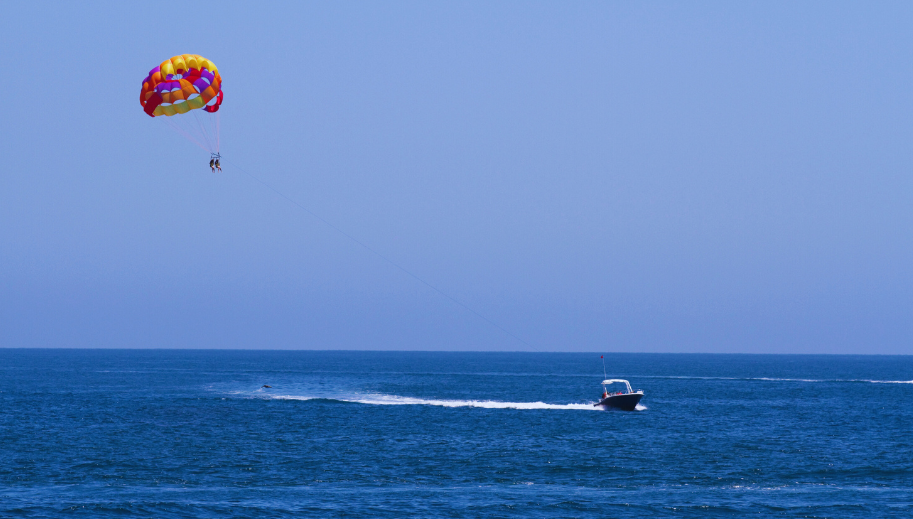Parasailing offers a thrilling experience for adventure enthusiasts. This water sport combines the excitement of flying with the beauty of the sea, making it a popular activity for many. In this article, we explore what is the average height for parasailing. Readers will learn about the different heights one can reach during parasailing, the factors that influence these heights, and safety considerations to keep in mind.
Understanding Parasailing Heights
Parasailing heights can vary based on several factors. On average, parasailers typically fly between 200 and 300 feet (61 to 91 meters) above the water. This range provides a safe and exhilarating experience for participants. The height allows for stunning views and a thrilling sense of elevation without being too intimidating for newcomers.
Some operators offer flights that can go as high as 500 feet (152 meters). However, these higher flights may come with additional risks and require perfect weather conditions. Beginners often start at lower heights to get comfortable with the experience. Higher flights can be thrilling but demand more from both the equipment and the participant’s confidence.
Factors Influencing Parasailing Heights
Weather conditions play a significant role in determining the height for parasailing. Calm, clear days allow for higher flights, while windy or stormy conditions may limit the height for safety reasons. Optimal weather ensures stable and enjoyable flights. On the other hand, adverse weather can make flights challenging and potentially dangerous, reducing the maximum height parasailers can achieve.
The equipment used also affects the achievable height. Stronger, more durable parasailing equipment can support higher flights. Modern gear often includes better materials and design, allowing for greater stability at higher altitudes. Conversely, older or less robust gear may restrict the height. Regular maintenance and upgrades of equipment ensure safer and more enjoyable parasailing experiences.
Safety Considerations for Parasailing Heights
Safety remains a top priority in parasailing. Operators ensure that the equipment meets safety standards and that weather conditions are favorable before allowing higher flights. Regular equipment checks and maintenance help prevent accidents. Participants should follow all instructions given by the parasailing operator. This includes wearing appropriate safety gear and understanding the emergency procedures. Proper gear, such as life jackets and harnesses, enhances safety.
Communication between the operator and participants is crucial. Clear instructions help participants feel more secure. Before the flight, operators often provide briefings on what to expect and how to respond in case of an emergency. Adhering to these guidelines ensures a safe and enjoyable parasailing experience.
What is the average height for parasailing?
During a typical parasailing flight, participants can expect to reach heights of around 200 to 300 feet (61 to 91 meters). The experience provides breathtaking views and a sense of freedom as you soar above the water. The initial ascent can feel thrilling, as the boat accelerates and lifts you into the air. Once at cruising altitude, the flight offers a serene and peaceful experience, with only the sound of the wind and waves below.
The duration of the flight can vary, but most parasailing adventures last about 10 to 15 minutes. This time frame allows participants to enjoy the height without experiencing discomfort or fatigue. The gentle descent back to the boat marks the end of the adventure. Overall, parasailing offers a memorable experience, blending excitement and tranquility.
Popular Destinations for Parasailing
Many popular beach destinations offer parasailing experiences. In the United States, Florida and California are well-known for their parasailing opportunities. Florida’s coastline, with its clear waters and consistent weather, makes it an ideal spot. California offers a mix of stunning beaches and breathtaking ocean views, attracting many parasailing enthusiasts.
Internationally, places like Bali, the Maldives, and the Greek Islands draw parasailing enthusiasts from around the world. Bali’s tropical climate and beautiful coastline provide perfect conditions. The Maldives, with its crystal-clear waters and serene environment, offers a unique parasailing experience. The Greek Islands combine rich history with stunning scenery, making parasailing there unforgettable.
Benefits of Parasailing
Parasailing offers several benefits beyond the thrill. It provides a unique perspective of the surrounding area, allowing participants to see the beauty of the coastline from a different angle. The elevated vantage point reveals hidden coves, vibrant marine life, and expansive beaches. This bird’s-eye view enhances the appreciation of natural landscapes and can be particularly captivating at sunrise or sunset.
Additionally, parasailing can be a relaxing experience. The calmness of the flight, combined with the gentle breeze, creates a peaceful and enjoyable activity for many. The sensation of floating above the water can reduce stress and promote a sense of well-being. For those seeking a break from the hustle and bustle, parasailing offers a perfect blend of excitement and tranquility.
FAQ – What is the average height for parasailing?
Parasailers typically fly between 200 and 300 feet above the water, although some operators offer flights up to 500 feet.
Yes, parasailing can be safe at higher heights if weather conditions are ideal and the equipment is in good condition. Always follow the operator’s safety instructions.
Wear comfortable clothing and a life jacket. Sunglasses and sunscreen are also recommended to protect against sun exposure.





